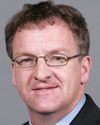The agreement was signed in June 2000. It's a ten-year program. In the document we have, Transport Canada also gave the district $795,000 that was to be used for maintaining the infrastructure, not for any improvements. Again, however, we were able to use some of those funds to leverage other funds to make that dollar stretch.
That being said, this is a $2-million facility that the district will run on its own now. It's a financial liability for a community of under 5,000 people, there are no two ways about that. I can understand the bit of mystery the other folks here have, in terms of understanding their relationship with the Transport Canada process and the whole divestiture rationale. I think it's a challenge for all the small communities. It will be a challenge in our futures, as well, to try to maintain these docks.



